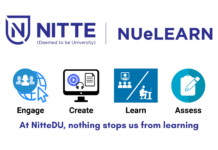Technology plays a pivotal role in shaping the learning experience for both students and educators. One such technological advancement that gained significant traction recently is Virtual Desktop Infrastructure (VDI). This innovative solution offers many benefits for educational institutions seeking to enhance efficiency, accessibility, and security in their academic endeavors. This article explores the key advantages of adopting Virtual Desktop Infrastructure in educational settings.
Improved Accessibility and Flexibility
One of the primary advantages of implementing Virtual Desktop Infrastructure in educational institutions is the enhanced accessibility it provides to students and faculty members. Traditional learning environments often tie individuals to specific physical locations, limiting resource access flexibility. With VDI, users can securely access their desktops and applications from virtually any device with an internet connection. This newfound flexibility allows students to engage in coursework from home, libraries, or other remote locations, breaking down geographical barriers. Faculty members can also benefit by quickly accessing teaching materials and resources, fostering a more dynamic and adaptable learning environment. Remember to opt for VDI management solutions that align with the unique needs of your educational institution. This will maximize the benefits of improved accessibility and flexibility.
Cost-efficiency and Resource Optimization
Education budgets are a constant concern for institutions at all levels. Adopting VDI can lead to substantial cost savings by optimizing resource utilization. Traditional computer labs require a significant hardware, maintenance, and energy consumption investment. In contrast, VDI centralizes computing resources, enabling multiple users to share the same physical infrastructure. This centralized approach reduces the need for individual desktops or laptops in classrooms, lowering hardware costs and minimizing the institution’s environmental footprint. The ease of management and reduced hardware maintenance requirements also contribute to long-term financial benefits.
Enhanced Security and Data Protection
Security is a top priority for educational institutions, especially when dealing with sensitive student and faculty data. Virtual Desktop Infrastructure offers robust security features that help safeguard information against potential threats. Centralizing data on servers with stringent access controls minimizes the risk of unauthorized access and data breaches. Furthermore, in the event of a lost or stolen device, the risk of data exposure is mitigated, as the data resides on centralized servers rather than individual devices. This protects sensitive information and ensures compliance with data protection regulations.
Streamlined Software Management and Updates
Managing software and updates across multiple devices in a traditional educational setting can be a logistical challenge. VDI simplifies this process by centralizing software deployment and updates. IT administrators can efficiently manage applications from a centralized location, ensuring all users can access the latest software versions and security patches. This streamlining of software management reduces the workload on IT staff and minimizes disruptions to the learning process. Users can seamlessly access their virtual desktops with the assurance that they are working with up-to-date and secure software.
Scalability to Accommodate Growing Needs
Educational institutions often experience fluctuations in the number of students and faculty, especially during enrollment. Virtual Desktop Infrastructure provides a scalable solution that can quickly adapt to the institution’s changing needs. Whether there’s a need to accommodate a growing student body or scale down during leaner periods, VDI allows flexibility without significant infrastructure changes. This scalability ensures that educational institutions can efficiently allocate resources based on demand, optimizing the use of both hardware and software licenses. As a result, institutions can maintain a cost-effective and agile IT infrastructure that aligns with their current requirements.
VDI facilitates collaboration and remote learning by allowing students and faculty to access the same virtual environment regardless of their physical location. Real-time collaboration tools like video conferencing and shared document editing can seamlessly integrate into the virtual desktop environment. This enhances communication and collaboration among students and educators, promoting a more interactive and engaging learning experience.

Reduced Downtime and Improved Disaster Recovery
Traditional IT infrastructures are susceptible to downtime due to hardware failures, system crashes, or unforeseen disasters. Virtual Desktop Infrastructure minimizes downtime by centralizing computing resources and data storage. In a hardware failure or system issue, users can quickly switch to backup servers or virtual machines, reducing disruptions to the learning process. Additionally, the centralized nature of VDI simplified disaster recovery efforts. Regular backups and efficient recovery mechanisms ensure educational institutions can swiftly recover from data loss or system failures, maintaining continuity in teaching and learning activities.
Adopting Virtual Desktop Infrastructure in educational institutions brings forth many benefits that contribute to a more efficient, flexible, and secure learning environment. From enhanced accessibility and cost-efficiency to improved security and collaboration capabilities, VDI empowers educational institutions to stay at the forefront of technological advancements. As the educational landscape evolves, embracing Virtual Desktop Infrastructure emerges as a strategic investment for institutions looking to provide a cutting-edge learning experience. By unlocking the potential of VDI, educational institutions can better prepare students for the digital future while optimizing their operations for long-term success.




![Merchant Navy Recruitment 2024: [4000+ Posts]: How To Apply Online? Merchant Navy Recruitment 2024: [4000+ Posts]: How To Apply Online?](https://futurewithtech.com/wp-content/uploads/2024/05/Indian-Merchant-Navy-Recruitment-2024-218x150.jpg)
